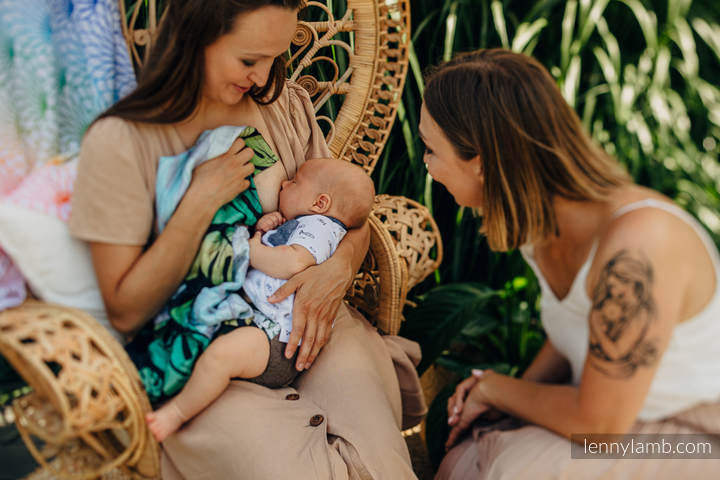



Hormones in lactation - how does it work?
Milk production is a process regulated by hormones. Before our adventure with lactation begins, our body goes through several stages in the reproductive cycle:
- embryogenesis, which is the development of the mammary gland in the fetal and neonatal period
- mammogenesis, which is the development of the mammary gland at puberty
- lactogenesis - the full development of the mammary gland and the initiation of secretory function that occurs during pregnancy and after birth
- LACTATION - the moment when our mammary glands produce milk.
After breastfeeding is complete, involution occurs, which means the mammary gland stops secreting milk.
During pregnancy the first stage of lactogenesis begins and lasts until 72 hours after birth. During this time we have no real influence on lactation. It does not matter whether we put the baby to the breast or not. Colostrum production and flow during this period is hormonally regulated, mainly by a constant, high level of progesterone in the mother's blood serum. Approximately 30-40 hours after birth, there is a rapid decrease of progesterone in the mother's blood serum with a high concentration of prolactin, which initiates stage II lactogenesis. Women know this moment as the beginning of milk letdown. Infusion usually passes around day 5 postpartum, but some processes occurring during lactogenesis II may persist until day 10-14 postpartum. The amount of milk is regulated by the prolactin reflex - the concentration of prolactin is proportional to the intensity of nipple stimulation.
Between 10 and 14 days after the birth, the third stage of lactogenesis takes place - LACTATION. At this stage, the amount of milk is stabilized, the mother's milk has acquired a mature composition. The concentration of prolactin no longer affects the production of milk. From now on, lactation, which is regulated by the oxytocin reflex, will depend on the correct attachment of the baby to the breast, and thus its emptying.
And what is the oxytocin reflex?
The oxytocin reflex is a mechanism that is triggered by the baby suckling at the breast, being close to the baby or thinking about the baby. The hypothalamus secretes oxytocin, which is transmitted to the posterior lobe of the pituitary gland and through blood vessels reaches the mammary gland, where it triggers the contraction of the cells surrounding the follicles and milk ducts, resulting in the outflow of milk. Women feel a tingling sensation in their breasts at this point. Often there is also a spontaneous outflow of milk. Oxytocin also has a beneficial effect on the mother. It makes her calm, relaxed and lowers her blood pressure. Any mental and physical discomfort of the mother can weaken or even inhibit the oxytocin reflex.
And what does babywearing have to do with all this?
It has a significant impact on lactation because it can realistically help us increase oxytocin levels in our bodies.
Building a bond between mother and child is aided by oxytocin. One of the first factors in building this bond is touch and skin-to-skin contact, or closeness. This triggers a release of oxytocin in our brain. It decreases the secretion of cortisol, adrenaline and noradrenaline, the hormones responsible for stress.
Babywearing provides the mother and the child with closeness and touch, which strengthens the bond between them. We feel calmer having the baby close to us and hearing its breathing. Subconsciously our brain is also affected by the smell and warmth emanating from our baby. Our parenting skills are strengthened by being in close contact with our baby and being able to respond more quickly to his or her needs. If our child is very demanding it can cause us physical discomfort, associated with caring for the child and at the same time psychological, associated with fatigue. In this case babywearing makes it easier for us, so we can count on the improvement of physical and psychological comfort - a decrease in stress hormones.
Our baby feels safe in the wrap/carrier, because we create for them conditions similar to those they know from the womb life. It is easier for them to go through the process of intensive maturation in the first quarter of life, which is called the IV trimester of pregnancy. We also minimize the risk of overstimulation of the baby.
All aspects of babywearing make both the mother and the child relaxed and increase their sense of security. This causes a positive effect on the oxytocin reflex and supports our milky way.
Author: Katarzyna Czajka - midwife, certified lactation consultant and certified babywearing consultant
FB:Katarzyna Czajka Położna, CDL, Doradca Chustonoszenia